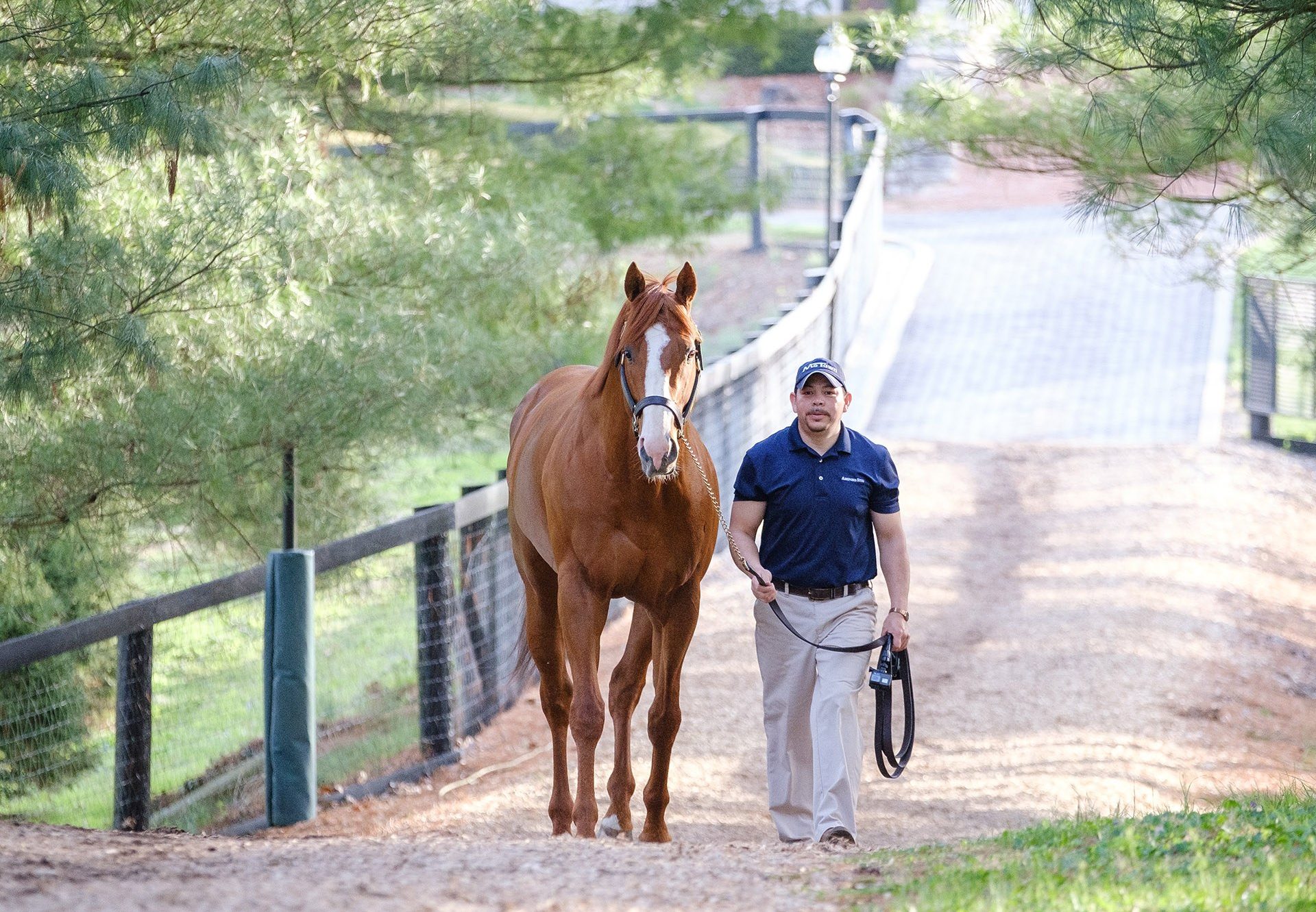
Baffert believes Justify, Pharoah will thrive in Australia
Courtesy of TDN Australia & New Zealand, Bill Finley, 16th April 2019
A radio station wanted to know what American trainer Bob Baffert thought of Winx (Street Cry {Ire}). Like virtually everyone else, he used every superlative he could think of to describe her racing career and then offered some advice to her owners.
“They should breed her to Justify,” he said. “That would be like breeding the perfect horse to the perfect horse. I can’t imagine the possibilities of what that baby could amount to.”
Team Winx will have that chance now that it has been announced that the 2018 U.S. Triple Crown winner Justify (USA) (Scat Daddy {USA}) will shuttle to Coolmore Australia for the 2019 Southern Hemisphere breeding season, where he will stand for a private fee. Justify will stand alongside fellow Triple Crown winner American Pharoah (USA) (Pioneer of the Nile {USA}), whom was also trained by Baffert.
Brilliance on the racetrack does not always guarantee that a horse will turn out to be a good sire. Of the three American Triple Crown winners in the 1970s, only Seattle Slew (USA) proved to be an outstanding stallion. Secretariat (USA) was not a bad sire, but did not live up to the very high exceptions set on him when he retired. Affirmed (USA) was not a particularly productive stallion.
Yet, Baffert said that both Justify and American Pharoah have all the tools to become top stallions. And, though neither one ran on the grass, he believes their offspring will handle that surface without any problems.
Baffert describes Justify as the type of horse you rarely see, in that he was absolutely the perfect horse, that there was not one box that was not checked off.
“With Justify, his body, the way he was built, if he were a body builder, he would have been Mr. Universe,” the Hall of Fame trainer said. “He could do it all. Justify, it’s very rare to see a horse like him. He was perfect.”
His jockey, Mike Smith, concurs: “He certainly has the pedigree to be a great stallion,” Smith said. “He had everything it takes that you want to see in a horse that’s going to be a stallion. He was naturally quick with a very high cruising speed. Has a lot of stamina. Has the looks to go along with it, not to mention the athleticism and balance that he had “
When a U.S. campaigned dirt horse goes over to Australia as a shuttle sire, there’s always the question of whether or not their progeny will take to the turf. With Justify, that probably won’t be a problem because his sire, Scat Daddy, is renowned for his ability to produce top turf horses.
Baffert said when he first looked at Justify’s pedigree he thought he had a turf sprinter on his hands. He was not a sprinter and he was untested on the turf, but Baffert believes he would have thrived on that surface. He could not take him to Royal Ascot because the races there conflicted with the American Triple Crown, but he wishes he had had the chance.
“I would have loved to take him over there for the race they have for 3-year-olds, (the G1 St. James’s Palace Stakes),” Baffert said. “He would have smoked them. When they’re that great they can run on anything. When he gets to Australia and they look at him they are going to go ‘wow’. He’s always had the wow factor.”
While both great horses, American Pharoah and Justify were not the same physically, Baffert said.
“They’re actually two different types of horses,” he said. “Pharoah was more of a leaner horse. He could get over the ground. Justify was a big strong heavy horse. He weighed 1,300 pounds. But both had the trait where there was something dominant about them. If another horse tried to run with them they would just shake them off.”
American Pharoah may not have as much grass in his pedigree as Justify does, but Baffert doesn’t see that as a problem.
“I think Pharoah could have been a grass horse too,” he said. “His mechanics, he just glided over the track. You watch him breeze, his mechanics were beautiful. He would just skip over the ground and that tells me he could have run on the grass.”
The results will be in on American Pharoah first as his horses bred in the Northern Hemisphere are now 2-year-olds and he’s already had his first winner. Monarch of Egypt (USA) won on April 13 at Naas in Ireland for the co-owners Coolmore and Peter Brant. The race was, of course, on the turf.
From what U.S. horsemen have seen so far from American Pharoah’s first crop, most think he has all the attributes to be exceptional stallion. The consensus is that, as 2-year-olds, they will come out relatively early but will reach their peak in the Autumn of their juvenile season.
“When you have a horse like that who stands for a lot of money, you’re not going to put them through the early rigors like you would with a horse by a $20,000 sire,” Baffert said. “You’re going to train them a little bit differently. There were a lot in the sales, but, the really good ones, people kept them. He’s going to come up with a lot of good horses. He almost has to. He was one of the greatest ever.”